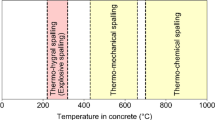Abstract
Compression failures (CF) are defects in the wood structure in the form of buckled fibres. They are a well-known 'natural' phenomenon in softwood trees exposed to frequent or strong winds, but their influence on the utilisation of timber is still debated. While a reduction of the mechanical properties in bending and tension at the fibre level and in small clear specimens is generally acknowledged, the effect is less obvious with structural timber in the presence of other defects such as knots or grain deviations. In the presented case study a statistically significant reduction of the moduli of rupture and elasticity in bending is observed in a sample of 563 squared timber beams, but the characteristic values of the mechanical properties still exceed the limits for the strength classes of visually graded structural timber (according to the Swiss standard SIA 265). Nevertheless, because of the potential safety risk by the more brittle fracture behaviour, it is recommended to exclude timber with detected CF from use in load bearing structures stressed in tension or bending.
Similar content being viewed by others
References
Trendelenburg R (1940) Über Faserstauchungen in Holz und ihre Überwallung durch den Baum. Holz als Roh- und Werkstoff 3(7/8):209–221
Mergen F, Winer HI (1952) Compression failures in the boles of living conifers. Journal of Forestry 50:677–679
Delorme A (1974) Über das Auftreten von Faserstauchungen in Fichtensturmholz. Forstarchiv 45(7):121–128
Timell TE (1986) Compression Wood in Gymnosperms. Volume 3, Chapter 15.2.1.5. Springer, Berlin
Koch G (1999) Sekundäre Veränderungen im Holz dynamisch beanspruchter Fichten (Picea abies [L.] Karst.) aus immissionsbelasteten und windexponierten Hochlagenbeständen. Mitteilungen der Bundesforschungsanstalt für Forst- und Holzwirtschaft, Hamburg, Nr. 192
Kucera LJ, Bariska M (1982) On the fracture morphology in wood. Part 1: A SEM-study of deformations in wood of spruce and aspen upon ultimate axial compression load. Wood Sci Technol 16:241–259
Wilkins AP (1986) The nomenclature of cell wall deformations, Wood Sci Technol 20:97–109
Terziev N, Geoffrey D, Marklund A (2005) Dislocations in Norway spruce fibres and their effect on properties of pulp and paper. Holzforschung 59:163–169
Sonderegger W, Niemz P (2004) The influence of compression failure on the bending, impact bending and tensile strength of spruce wood and the evaluation of non-destructive methods for early detection. Holz als Roh- und Werkstoff 62(5):335–342
Glos P, Denzler JK (2004) Einfluss von Faserstauchungen auf die Festigkeit von Fichtenbauholz. Schweiz Z Forstwes 155(12):528–532
Hoffmeyer P (2003) Mechanical Properties of Timber from Wind Damaged Norway Spruce. In: L. Salmén (Ed) Proceedings of the Second International Conference of the European Society for Wood Mechanics, Stockholm, Sweden, 25–28, May 2003
SIA 265/1 (2003) Construction en bois – Spécifications complémentaires. Société Suisse des Ingénieurs et des Architectes, Zurich
Arnold M (2003) Compression Failures in wind-damaged Spruce Trees. In: B. Ruck et al. (ed) Proceedings International Conference Wind Effects on Trees. 16–18. September 2003, University of Karlsruhe, Germany, Karlsruhe, pp 253–260
EN 338 (2003) Structural timber – Strength classes
EN 408 (1995) Timber structures – Structural timber and glued laminated timber – Determination of some physical and mechanical properties
prEN 384 (2000) Structural timber – Determination of characteristic values of mechanical properties
SIA 265 (2003) Construction en bois. Société Suisse des Ingénieurs et des Architectes, Zurich
Steiger R (1995) Biege – Zug- und Druckversuche an Schweizer Fichtenholz', Forschungsbericht ETH/IBK Nr. 207, Birkhäuser, Basel
Steiger R (1996) Mechanische Eigenschaften von Schweizer Fichten-Bauholz bei Biege-Zug-Druck-und kombinierter M/N-Beanspruchung; Sortierung von Rund-und Schnittholz mittels Ultraschall, Forschungsbericht ETH/IBK Nr. 221, Birkhäuser, Basel
Bernasconi A, Boström L, Schacht B (1999) Detection of severe timber defects by machine grading. Proceedings CIB-W18, 32. meeting, Graz, Austria, paper 32-5-2
Author information
Authors and Affiliations
Corresponding author
Rights and permissions
About this article
Cite this article
Arnold, M., Steiger, R. The influence of wind-induced compression failures on the mechanical properties of spruce structural timber. Mater Struct 40, 57–68 (2007). https://doi.org/10.1617/s11527-006-9120-1
Received:
Accepted:
Published:
Issue Date:
DOI: https://doi.org/10.1617/s11527-006-9120-1




